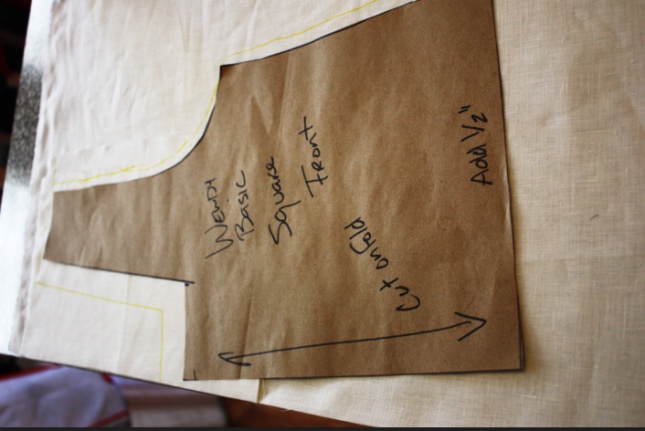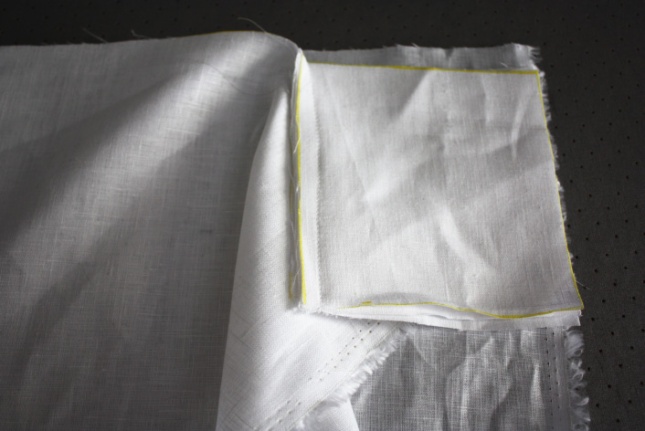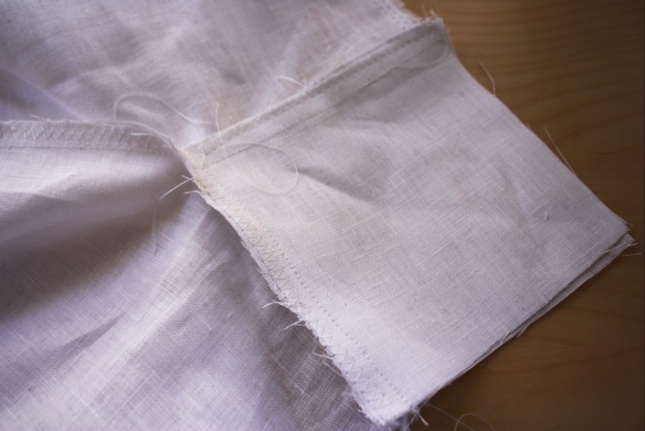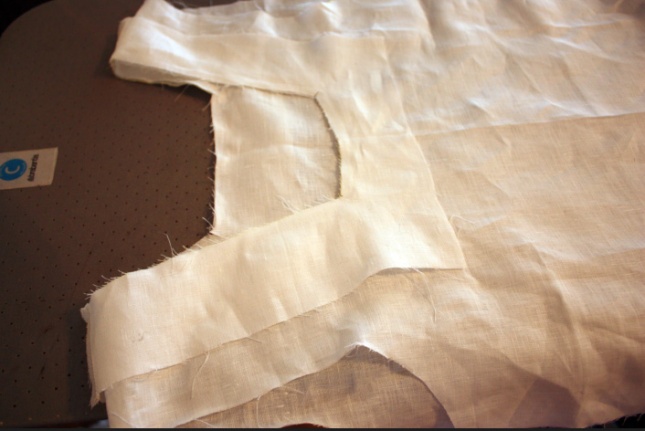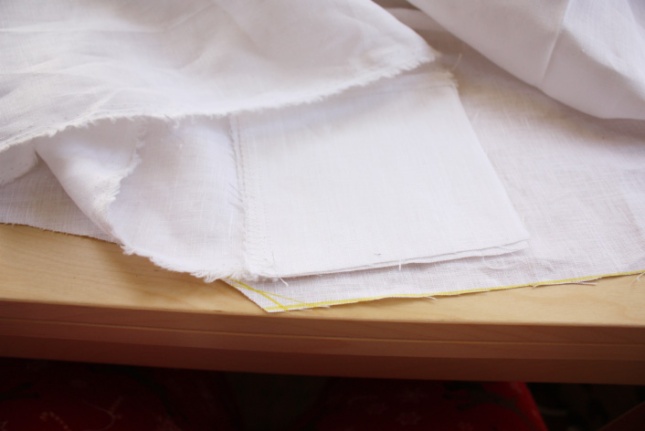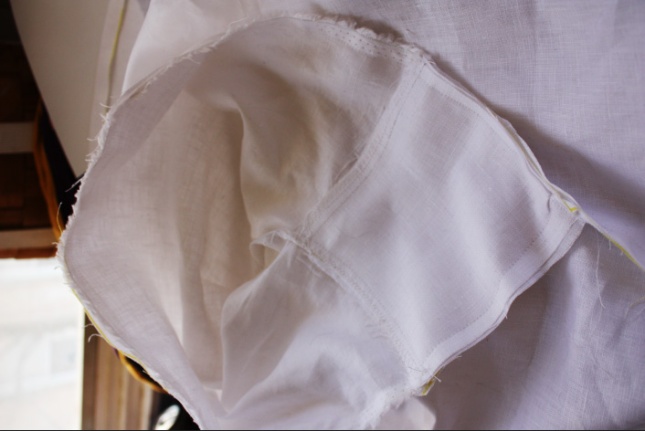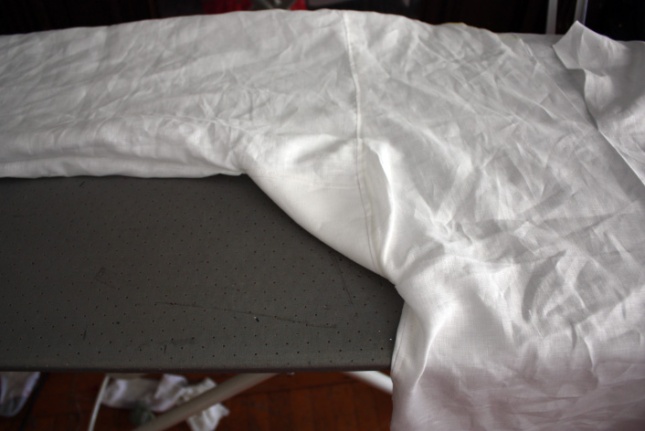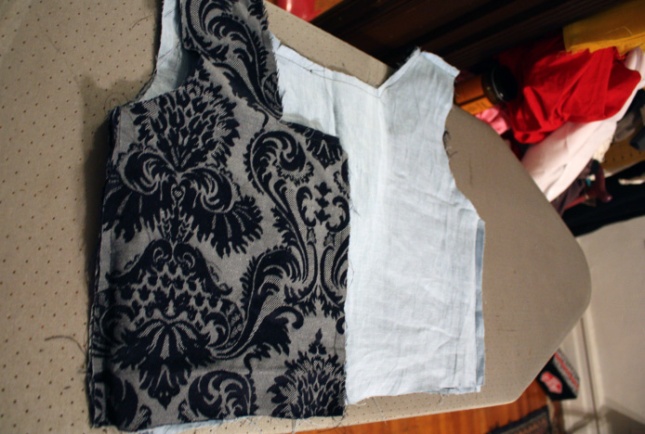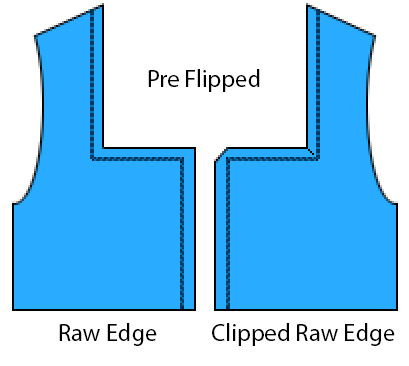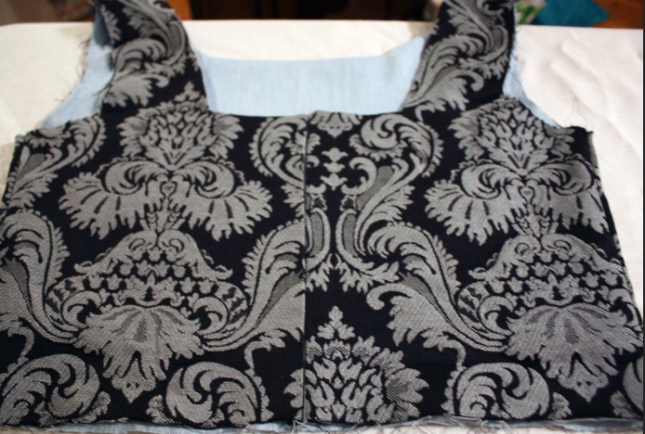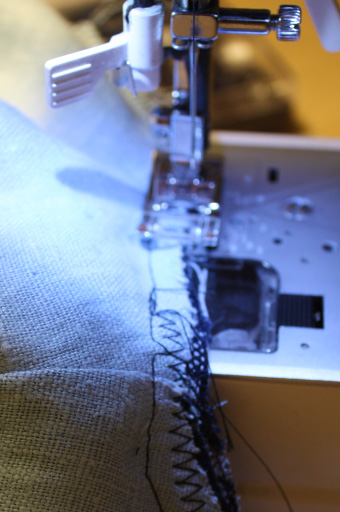In part 1 we created 1/2 of our shift, putting in the sleeves and sleeve gussets. In part 2, we will be adding the gores and finishing off our shift.
Step 1- Adding the gore
Take a gore at the point. Line this up with the open seam you left at the top of the side. Sew this line down. Go back up to the top of the point. Sew this line down the other side seam. If you have a little bit of a tail sticking up, that’s ok, it works it’s way out in the end.
When you open the side completely up, on your ironing board, it will look like this.
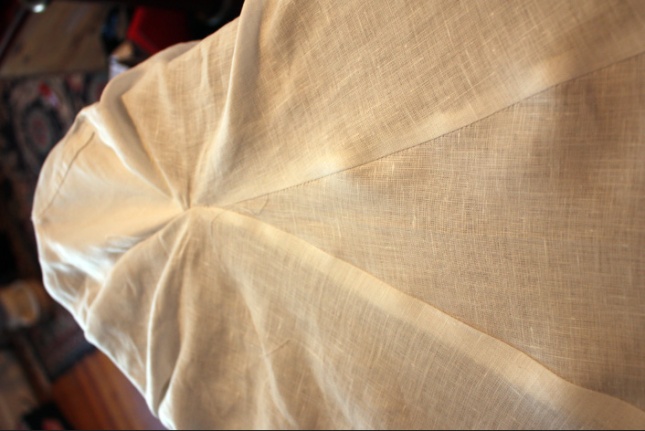
You should find this similar to putting in the gussets. It should be a little easier, since you are not trying to create an armscye at the same time.
Step 2- Seal, flip, press and sew down
Zigzag your edges. Turn right side out. Press all the seams. Then run a sealing over stitch.
Step 3- Repeat on the other side
Step 4- Cuffs
Cut out a cuff. I make mine about an inch larger than what will go around my wrist. This allows for a button and 1/2 seam allowance. I like my cuffs a little wide so when folded they measure 1.5-2″ wide. There is a 1/4 turned up on each side, to create the edge that gets attached to the shirt. If you want a full shirt sleeve, with lots of poof, you sleeve cuff will be 2-3 times longer than the length of the cuff.
Step 5- Attaching the cuff
You can pleat or gather the extra length of the sleeve prior to attaching the cuff. Pin it in place.
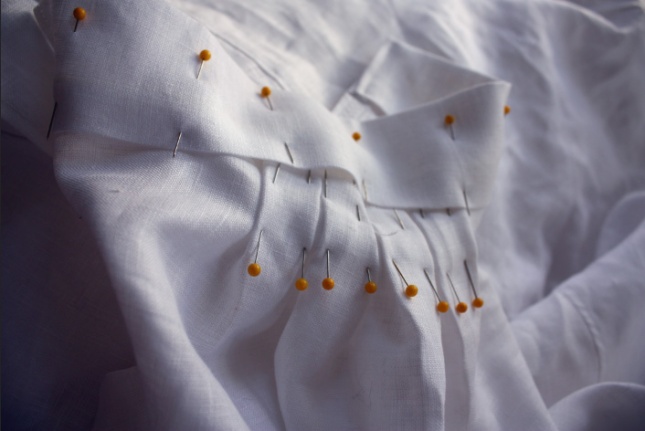
You can hand sew the cuff on or machine sew it.
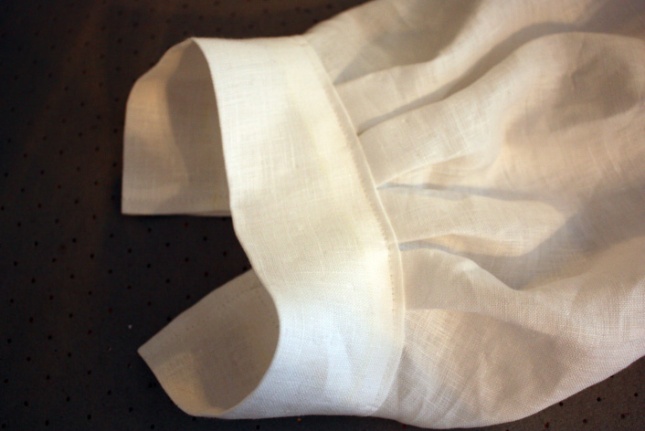
Step 6- Repeat
Step 7- Turn Collar
With the wrong sides out, iron a 1/4″ fold of the collar. When you flip this, the fold will be on the inside of the shift. This creates a nice edge to bind to the shift.*
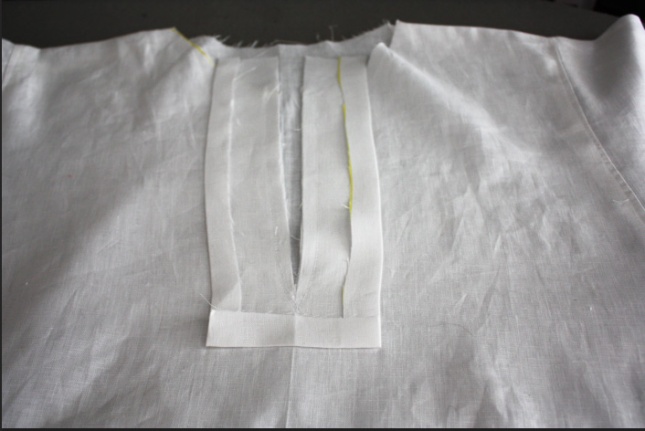
When this is done snip the corners and flip and press. Stitch it down 1/4″ from the shift opening/edge. You will run a second stitch along the now turned bottom edge of the neckline lining.
Step 7- Trim and hem
Trim the bottom hem of the shift. I like mine to be a bit rounded.

The completed shift has a decorative edge along the neckline and sleeves that have a simple embroidered edge in black silk.
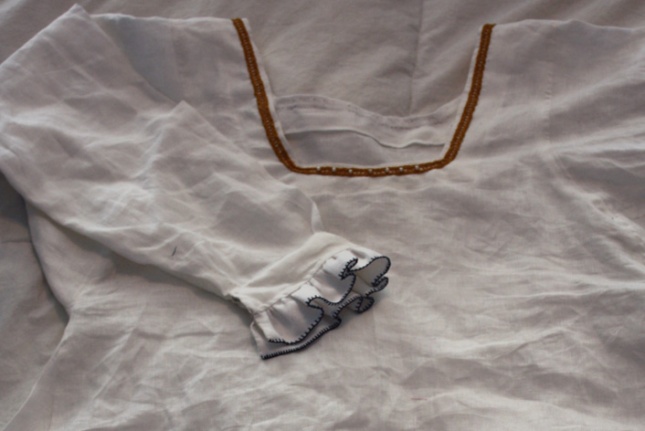
*This is the collar of a man’s shirt. I forgot to take a pic of the shift. The principles are exactly the same.

